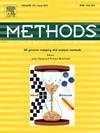基于掩模变分自编码器的区域对齐方法预测患者抗癌药物反应。
IF 4.3
3区 生物学
Q1 BIOCHEMICAL RESEARCH METHODS
引用次数: 0
摘要
预测患者对抗癌药物的反应在个性化治疗计划中是必不可少的。然而,由于细胞系数据和患者数据之间的显著分布差异,在细胞系数据上训练良好的模型在预测患者抗癌药物反应时可能表现不佳。一些现有的方法使用迁移学习策略来实现细胞系和患者数据之间的域特征对齐,并利用细胞系的知识来预测患者的抗癌药物反应。本研究提出了一种基于掩模变分自编码器(MVAEDA)的域对齐方法来预测患者的抗癌药物反应。该模型构建了多个变分自编码器(VAEs)和掩码预测器,以提取细胞系和患者的特异性和域不变性特征。然后,它屏蔽和重建基因表达矩阵,使用生成对抗训练从细胞系和患者域学习域不变特征。然后使用这些域不变特征来训练分类器。最后,训练后的模型预测目标区域的抗癌药物反应。我们的模型在临床数据集和临床前数据集上进行了实验评估。结果表明,我们的方法比其他最先进的方法性能更好。本文章由计算机程序翻译,如有差异,请以英文原文为准。
Domain alignment method based on masked variational autoencoder for predicting patient anticancer drug response
Predicting the patient’s response to anticancer drugs is essential in personalized treatment plans. However, due to significant distribution differences between cell line data and patient data, models trained well on cell line data may perform poorly on patient anticancer drug response predictions. Some existing methods use transfer learning strategies to implement domain feature alignment between cell lines and patient data and leverage knowledge from cell lines to predict patient anticancer drug responses. This study proposes a domain alignment method based on masked variational autoencoders, MVAEDA, to predict patient anticancer drug responses. The model constructs multiple variational autoencoders (VAEs) and mask predictors to extract specific and domain-invariant features of cell lines and patients. Then, it masks and reconstructs the gene expression matrix, using generative adversarial training to learn domain-invariant features from the cell line and patient domains. These domain-invariant features are then used to train a classifier. Finally, the final trained model predicts the anticancer drug response in the target domain. Our model is experimentally evaluated on the clinical dataset and the preclinical dataset. The results show that our method performs better than other state-of-the-art methods.
求助全文
通过发布文献求助,成功后即可免费获取论文全文。
去求助
来源期刊

Methods
生物-生化研究方法
CiteScore
9.80
自引率
2.10%
发文量
222
审稿时长
11.3 weeks
期刊介绍:
Methods focuses on rapidly developing techniques in the experimental biological and medical sciences.
Each topical issue, organized by a guest editor who is an expert in the area covered, consists solely of invited quality articles by specialist authors, many of them reviews. Issues are devoted to specific technical approaches with emphasis on clear detailed descriptions of protocols that allow them to be reproduced easily. The background information provided enables researchers to understand the principles underlying the methods; other helpful sections include comparisons of alternative methods giving the advantages and disadvantages of particular methods, guidance on avoiding potential pitfalls, and suggestions for troubleshooting.
 求助内容:
求助内容: 应助结果提醒方式:
应助结果提醒方式:


